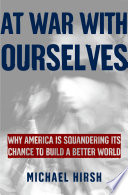

The book delves into the complexities of human identity, illustrating how individuals often find themselves in a state of internal conflict. This conflict arises from the juxtaposition of personal aspirations against societal expectations. The author argues that this dichotomy can lead to a sense of disillusionment and frustration. By examining various case studies and personal anecdotes, the book highlights how this internal struggle can manifest in decision-making processes, ultimately affecting both personal and professional lives. The author encourages readers to explore their own identities and understand the motivations behind their actions, suggesting that self-awareness is key to resolving these conflicts.
Continue readingIn the modern world, technology plays a significant role in shaping our identities. The book discusses how social media, digital communication, and the constant influx of information can distort our self-perception. The author emphasizes that while technology can connect us, it can also create a façade that individuals feel compelled to maintain. This chapter explores the psychological impacts of online personas and the pressure to conform to curated identities. The author argues for a balanced approach to technology use, advocating for mindfulness in how we engage with digital platforms to foster authenticity rather than a superficial existence.
Continue readingVulnerability is often perceived as a weakness, but the book posits it as a strength that can lead to deeper connections and personal growth. The author draws on psychological research to illustrate how embracing vulnerability can foster resilience and authenticity. By sharing personal stories and examples, the book encourages readers to confront their fears and insecurities. This chapter emphasizes that vulnerability can enhance relationships, improve communication, and lead to better collaboration in professional settings. The author provides practical strategies for cultivating vulnerability, suggesting that it is a crucial component in the journey towards self-acceptance.
Continue readingThe contemporary work environment is characterized by rapid change and uncertainty. The book discusses the challenges individuals face in navigating this landscape, including job insecurity, the gig economy, and the need for continuous skill development. The author emphasizes the importance of adaptability and lifelong learning in achieving career success. Through interviews with industry leaders and professionals, the book provides insights into how to thrive in an ever-evolving job market. Readers are encouraged to embrace change and view challenges as opportunities for growth, ultimately redefining their approach to career development.
Continue readingHuman beings are inherently social creatures, and the book underscores the importance of community in fostering a sense of belonging and purpose. The author discusses how isolation can exacerbate internal conflicts and hinder personal growth. By sharing examples of successful communities that support individual and collective growth, the book illustrates the transformative power of connection. The author encourages readers to seek out supportive networks and engage with others to build meaningful relationships. This chapter highlights the role of empathy and collaboration in overcoming personal and societal challenges.
Continue readingCultural narratives shape our perceptions of success, happiness, and identity. The book examines how societal narratives can create unrealistic expectations and contribute to feelings of inadequacy. The author encourages readers to critically assess the cultural stories they internalize and how these narratives influence their lives. By challenging dominant cultural narratives, individuals can reclaim their identities and redefine what success means to them. This chapter provides tools for deconstructing harmful narratives and replacing them with empowering stories that align with personal values and aspirations.
Continue readingThe quest for purpose and meaning is a central theme in the book. The author argues that understanding one's purpose is essential for navigating the complexities of life and work. Through a combination of personal reflection and practical exercises, readers are guided to explore their values, passions, and goals. The book emphasizes that finding purpose is not a destination but a continuous journey that evolves over time. By aligning actions with personal values, individuals can cultivate a sense of fulfillment and direction, ultimately leading to a more meaningful existence.
Continue reading